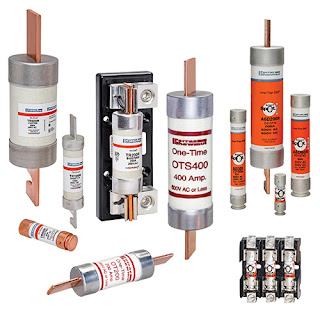Novel Thermal Design Reduces Inverter Volume
Lenze has developed 8200 vector inverters using the 'cold plate' technique for cases where the inverter can be mounted directly onto a substantial heatsink. AC Tech (Lenze AG) 8200 Vector Inverters are available for power 0.55 to 90kW with three-phase supply. In the more popular smaller sizes up to 22kW, a space saving variant can reduce the requirement for panel space by up to 40%.
By dissipating the heat outside the cabinet, these 'cold plate' versions enable panels to have higher enclosure ratings. Alternatively a plate with external cooling by liquid or air can be used. The cold plate versions of the 8200 vector inverters have no heat fins, so heat generated is passed to the mounting plate and transmitted out of the cabinet.
In this way inverters require less mounting depth and the space savings are substantial. For a 1.5kW inverter the saving is 25%, rising to 40% for a 22kW inverter. Therefore panels can be smaller and costs reduced. As the heat is now transmitted to outside of the cabinet, requirements for a flow of cooling air through the cabinet are removed. Cabinets can be sealed and protection to IP65 is easier to achieve.
This is particularly advantageous in dusty conditions where any through flow of air would cause a dust build-up. Above 22kW the cold plate design is not available. However an alternative 'push-through' design can be used right up to 90kW. Here the Lenze Inverter Heatsink is mounted outside of the panel, gaining the advantages of panel space and enclosure as described. The concept of the 8200 vector frequency inverter is based on a modular system of complementary components.
Combined with a Lenze geared motor or a Lenze three-phase AC motor, it can be used to implement electronic variable speed drives for a multiplicity of applications. Compact: Side-by-side mounting saves space in the control cabinet. Integrated filters (optional) simplify installation. Flexible: The modular structure enables the inverters to be optimised for your application. This results in cost-effective but high-performance drive solutions. Whether as a "stand-alone" inverter with setpoint selection via potentiometer or a networked inverter with speed feedback in master/slave mode, the inverter functions can be adapted to suit every application.
By dissipating the heat outside the cabinet, these 'cold plate' versions enable panels to have higher enclosure ratings. Alternatively a plate with external cooling by liquid or air can be used. The cold plate versions of the 8200 vector inverters have no heat fins, so heat generated is passed to the mounting plate and transmitted out of the cabinet.
In this way inverters require less mounting depth and the space savings are substantial. For a 1.5kW inverter the saving is 25%, rising to 40% for a 22kW inverter. Therefore panels can be smaller and costs reduced. As the heat is now transmitted to outside of the cabinet, requirements for a flow of cooling air through the cabinet are removed. Cabinets can be sealed and protection to IP65 is easier to achieve.
This is particularly advantageous in dusty conditions where any through flow of air would cause a dust build-up. Above 22kW the cold plate design is not available. However an alternative 'push-through' design can be used right up to 90kW. Here the Lenze Inverter Heatsink is mounted outside of the panel, gaining the advantages of panel space and enclosure as described. The concept of the 8200 vector frequency inverter is based on a modular system of complementary components.
Combined with a Lenze geared motor or a Lenze three-phase AC motor, it can be used to implement electronic variable speed drives for a multiplicity of applications. Compact: Side-by-side mounting saves space in the control cabinet. Integrated filters (optional) simplify installation. Flexible: The modular structure enables the inverters to be optimised for your application. This results in cost-effective but high-performance drive solutions. Whether as a "stand-alone" inverter with setpoint selection via potentiometer or a networked inverter with speed feedback in master/slave mode, the inverter functions can be adapted to suit every application.


Comments